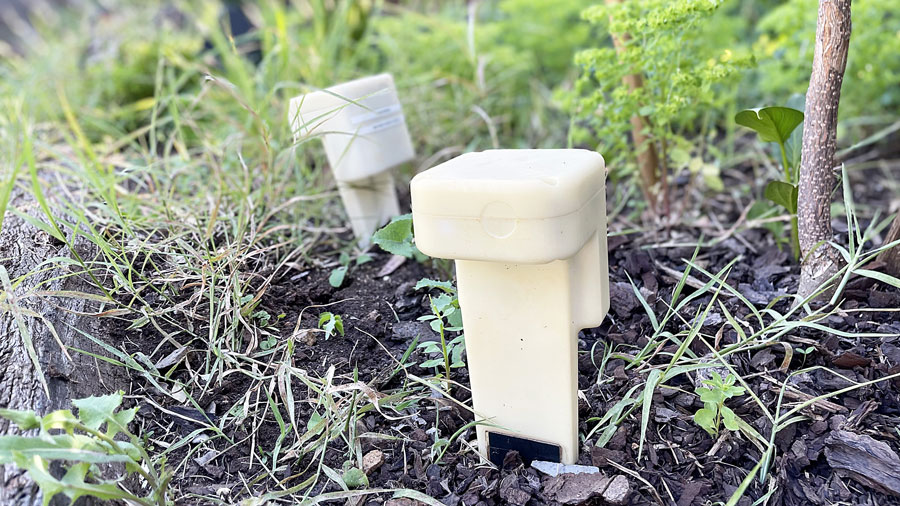Key points
- AquaTerra is developing a battery-operated device to gauge soil moisture and temperature at depths of up to two metres
- It uses sensors set 150 millimetres into the ground
- Every two hours, the device automatically sends data via Telstra’s Internet of Things network to a web-based app
- The AquaTerra team decided to take the device to the grains industry after taking part in the Farmers2Founders five-month accelerator program, Harvest
Melbourne agtech startup AquaTerra is developing a battery-operated device that uses sensors set 150 millimetres into the ground to gauge soil moisture and temperature at depths of up to two metres.
Every two hours, the device automatically sends data via Telstra’s Internet of Things network to a web-based app. From there it can be accessed by growers and agronomists and used to guide agronomic decisions.
While the sensors have been successfully trialled by one of Australia’s biggest vegetable producers, the AquaTerra team decided the grains industry had an even greater need for this data when it took part in the Farmers2Founders five-month accelerator program, Harvest – with support from GRDC – in 2021-22.
Co-founder and R&D lead Guillermo Narsilio says the company has done several accelerator and entrepreneurship programs, but the Farmers2Founders Harvest program is the most valuable because of its focus on agriculture.
He says the Harvest program helped them find another group of potential customers – grain growers.
Co-founder and managing director Amir Orangi says that given the size of grain farms and the lack of affordable technology, there is a gap for AquaTerra to fill.

Melbourne agtech startup AquaTerra is developing a battery-operated device that uses sensors to gauge soil moisture and temperature. Photo: supplied by AquaTerra
“When we did our financial modelling, we saw that although the horticulture market itself in Australia is worth maybe twice as much, the impact that we could make in the grain market was larger,” Mr Narsilio says.
Other highlights from the Harvest program included securing strategic collaborations with Telstra, receiving funding of $50,000 from LaunchVic and applying to the University of Melbourne for a $100,000 grant.
Mr Orangi says they are now running on-farm trials, in talks with potential investors and manufacturers, and working with Telstra to improve connectivity and robust communication protocols so that data can be reliably transmitted from the sensors even in remote areas.
AquaTerra has also launched two online calculators on its website to allow growers to model crop loss savings and water savings in dollar amounts for seven crops, including barley, wheat and canola.
The calculators use a range of published data from the Bureau of Meteorology, statistics from the Australian Bureau of Agricultural and Resource Economics and Sciences, and technical papers for national average values as the default. Growers and agronomists can substitute those with actual numbers.
Feedback so far has been positive, although many growers were doubtful to begin with. “Their first reaction is the savings are too good to be true,” Mr Orangi says. “But then when we go item by item on inputs all of this makes sense.”
As well as progressing design and production of the sensors, AquaTerra is keen to undertake further trials with grain growers so the technology can be ground-truthed – and the calculators tweaked – and they can develop a series of case studies showcasing results.
View the savings calculators.
More information: Amir Orangi, amir@aqua-terra.com.au

























































